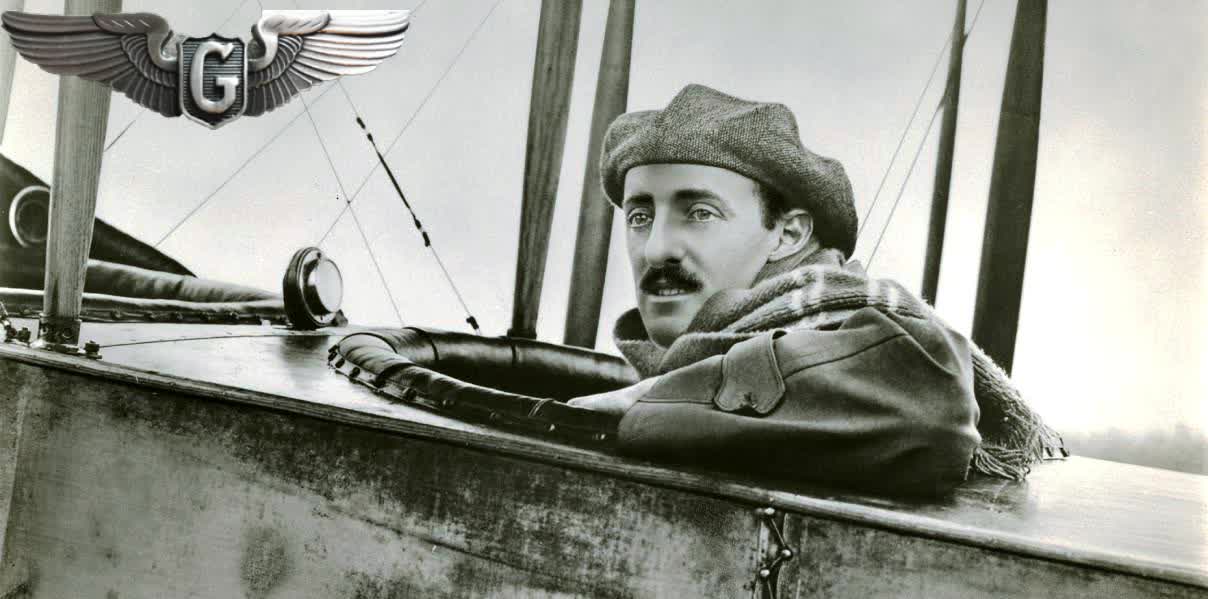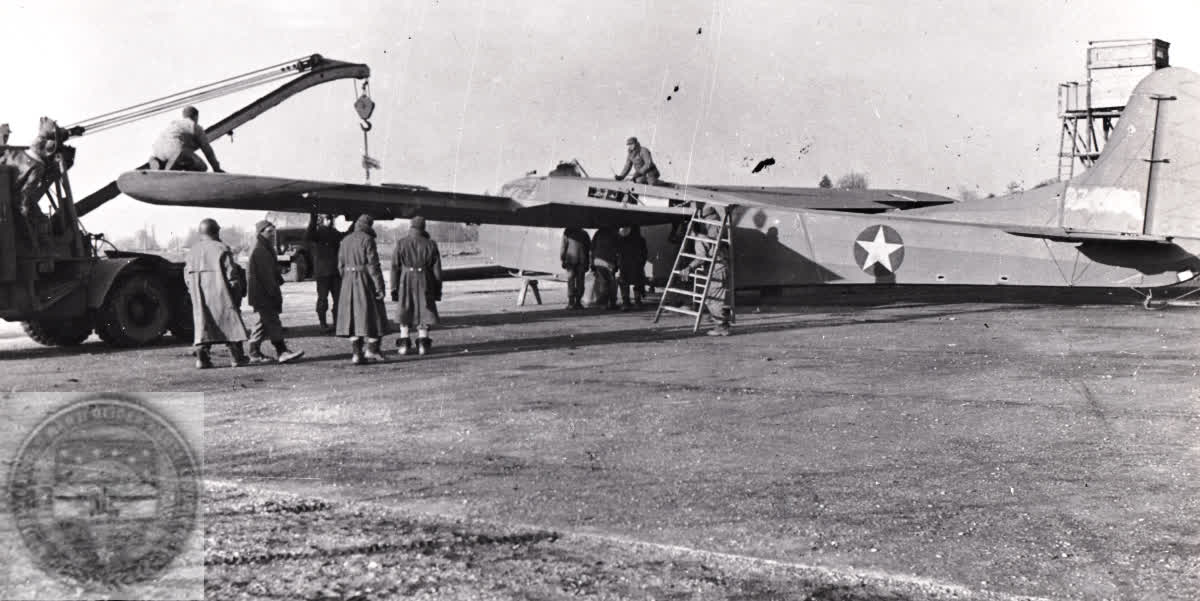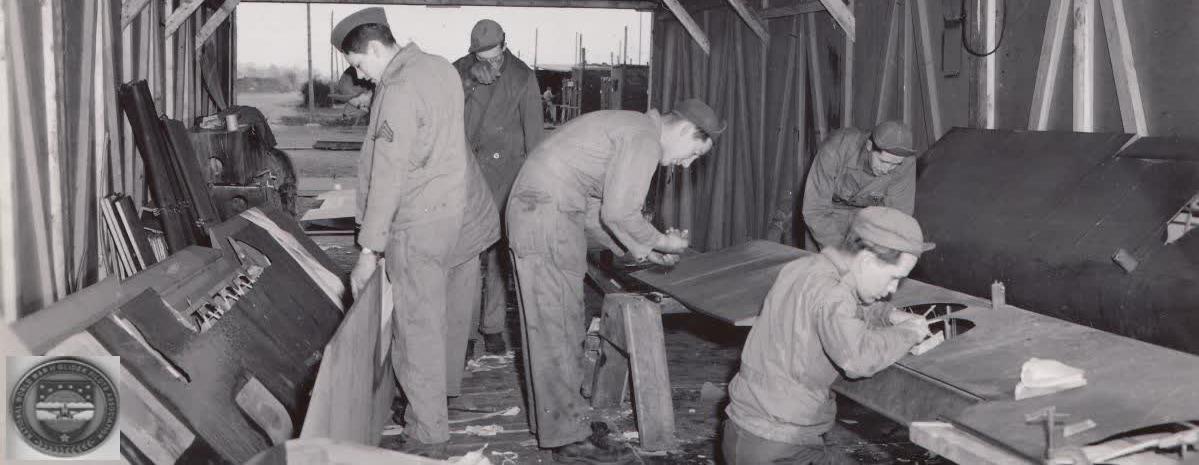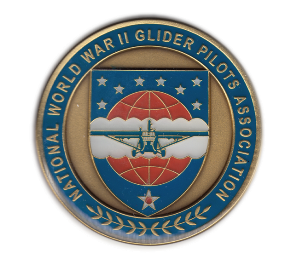National WWII Glider Pilots AssociationLegacy Organization of veterans National WWII Glider Pilots Association. Discover our History, Preserve our Legacy | ||
|
During World War II war bond drives raised millions of dollars. On the faith of the U.S. government, bonds to be paid in the future, were sold to bring cash into the government to help pay for the war effort. Many school children had a booklet that represented a $25.00 bond which was the lowest denomination bond sold. Whenever possible they paid a dime or a quarter for a corresponding value stamp to paste into the booklet. When the stamp value in the booklet reached $18.75, it was turned in for a $25.00 Bond. This Bond certificate was a receipt for a promise of the United States to pay that amount. The maturity and redemption of the bond was a minimum of 10 years at which time one could collect the bond’s face value. That bond certificate may still be worth $25.00, but today, the value is approximately $2.50 in 1945 dollars. The story of the Fighting Falcons that flew the first glider mission into Normandy early morning of June 6, 1944 began when the grade school children in Greenville, MI sold enough war bonds in six weeks to pay for almost four CG-4A gliders built in Greenville by the Gibson Refrigerator Company. This was the first publicly run bond drive approved by the US Treasury Department in the country. At the time this was unusual because the government normally conducted the War Bond drives. Captain E. Lee Jett was a power pilot assigned to the glider branch at Wright Field and Clinton County Army Air Field involved with the tests and experiments in the development of the winches used for snatching humans and gliders. In 1943 he was involved with the B-23 on pickups of the XCG-3 and the Stinson XC-81-D, pickups of various dead weights, and the first human pickup early in September 1943 at CCAAF. During these projects Jett worked under the “snatch masters”, Captains, Norman Rintoul and Lloyd Santmeyer. When the first model 80 (for the CG-4A) winch was ready in 1943, he worked under Lloyd Santmeyer snatching the CG-4A. Captain Jett was transferred from CCAAF to Stout Field, Troop Carrier Command as more winches became available. Along with his C-47 crew chief, Louis Winters, on temporary duty he went to Bear Field, Ft. Wayne, IN, the jumping off base for C-47 crews flying to England in spring of 1944. They instructed pilots and crew chiefs on the specifics of the glider pick-up process. Later in 1944 and in 1945, Captain Jett was in charge of a group that flew C-47 and CG-4A demonstrations, purposed to sell war bonds. At these demonstrations, the government set up a large tent from which it sold war bonds. Jett’s group included his favorite CG-4A glider pilot, F/O John Bryant, and F/O John Leslie “Jackie” Coogan who had just returned from duty in the Burma/India theater. In addition, there were a number of Airborne Troopers, other C-47 pilots and a nurse. This group flew mainly in the upper region of the country. Their demonstrations were flown at cities in New Jersey, Pennsylvania, Ohio, Michigan, Wisconsin, Minnesota, Missouri, Kansas, and west to California. After earning his G wings, glider pilot, First Lieutenant John Mason was performing new glider acceptance tests, flying new gliders built by Northwestern Aeronautical in Minneapolis-St. Paul. After acceptance, he flew gliders to various glider pilot training bases. Mason was sent to the Philippine area. On return from the South Pacific Theater, Mason was assigned to a glider demonstration group, though not Captain Jett’s. His group flew demonstrations in Alabama, Arkansas, Louisiana, Nebraska and other states east of Texas. These demonstration groups consisted of several Airborne Division paratroopers and glider troopers and Troop Carrier Command glider and power pilots along with Troop Carrier enlisted men who maintained the aircraft. Some pilots such as John Mason and some airborne infantry personnel had been returned to the states after serving in combat. Glider pilot, 1Lt John Mason returned from combat duty in the South Pacific. Staff Sergeant Paul B. Huff of the 309 Parachute Infantry Battalion returned from combat duty in Europe. Mr. Mason said Sergeant Huff was assigned to the 101 Airborne Division, and was the only living paratrooper who had received the Medal of Honor at that time. Mr. Mason described the demonstrations as follows. The crowd of visitors was considered to be the enemy. First, two C-47 would fly over the area and ten paratroopers would jump from each aircraft. The paratroopers would surround the enemy and prepare for the gliders to land. Two gliders would fly over, cut loose, and land. One contained a Jeep and four men, the other a 75 mm howitzer and the gun crew. The Jeep drove out of the glider, automatically raising the glider nose, hooked onto the howitzer and drove out onto the field well out in front of the crowd. In order to capture the enemy the gun crew and the paratroopers fired blank cartridges for noise and effect. So, what is this landing on a dime business about? After the enemy was captured, one glider was prepared for a conventional take-off from the ground. The crowd was informed of the accuracy and expert ability of the glider pilot to land the glider, taxi it, and park it on an exact spot in spite of not having engines to power the glider. To illustrate this accuracy the crowd was informed the glider pilot could land on a dime. Ceremoniously, a dime was placed on the runway. The glider was towed to 10,000 feet. This glider pilot would do various aerobatic maneuvers on the way down from 10,000 feet, land, and taxi to the exact spot and put the nose down on the dime. A demonstration at Mobile, Alabama attracted over 100,000 visitors. Mr. Mason furnished newspaper clippings stating the dime used at this show was auctioned to the highest bidder for $2,000,000.00. This high bid was by Mr. A. Q. Peterson, President of the Wesson Oil Company and Snowdrift Company, Inc. The companies were a contractor of cooking oil for the Army and Navy and this $1,500,000.00 (cost) bond purchase was to show appreciation. The dime was attached to an Airborne Attack commemorative certificate, signed by Sergeant Huff, and presented to Mr. Peterson. Other demonstration groups flew mainly to cities where CG-4A gliders were built. Then, as today, the glider pick-up or “snatch” system was mysterious and attracted quite a lot of public attention. The Ford Motor Company airfield at Kingsford (Iron Mountain), MI was not large enough to easily tow CG-4A gliders from the ground. Thus, some Ford gliders that were flown to glider pilot training bases had been snatched from the airfield. Snatch pick-up demonstrations for the public were flown at Iron Mountain circa June 24, 1945. The crowd was estimated at more than 10,000. Glider pilots, 1Lt Robert Beahan, F/O Cornelius Vangronigen, F/O Walter Washbaugh, and F/O Karl Weinfurtner were CG-4A glider flight instructors who flew these glider snatch demonstrations. Prior to the show, the public were encouraged to go tomorrow to their bank or post office and purchase “that extra war bond, not $25.00, not $50.00, but $100.00 or $200.00” for the continued effort to defeat Japan. When Captain Jett’s demonstration group performed at Toledo, Ohio (circa early 1945), a “little girl.” was chosen from the crowd and the dime was
presented to her after the glider had “landed” on it. In 1999, I learned the little girl’s (lady’s) married name but finding her was an impossible dead end. More than a dozen
telephone numbers with that name were dialed and no one admitted knowing the lady. Finally, I spoke with a lady who said she was a sister-in-law. Naturally, she was quite
hesitant to give me any information. Finally after talking for a while she gave me an unlisted phone number and other pertinent information allowing me to speak with the
“little girl.” by telephone. My ultimate question was, “Do you still have that dime?”
Information for this article was gathered from personal interviews with Lee Jett (Capt USAAF) and John Mason (1Lt USAAF); during the author’s research for
Silent Ones WWII Invasion Glider Test and Experiment Clinton County Army Air Field Wilmington Ohio. and from Iron Mountain. MI newspaper clippings provided by Rob Beahan.
|
CG-4A WWII CARGO GLIDER GENERAL SPECIFICATION - CG-4A
Wing Span -- 83', 8" Length (Overall) -- 48', 3-3/4" Height -- 12', 7-7/16" Weight, design -- 3,750 lbs Gross Weight, design -- 7,500 lbs Wing Chord -- 10', 6" Specs for covering the CG-4A call for: Flightex Intermediate airplane fabric manufactured by Suncook Mills, or an equivalent light airplane cotton fabric. More Specifications
CG-4A WAS FLIMSY? COMMUNICATION SYSTEM CG-4A Loads CG-4A Load Facts CG-4A Cockpit CG-4A Instrument Panel 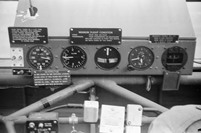 STORIES:
|
The HORSA GLIDER |
GLIDER PICKUP/Snatch Snatching a Glider RECLEMATION American Glider Pilots Captured by British A/B by William SIMONSEN Double Snatch by Charles Day First Glider Snatched from Normandy by Gerald BERRY REMAGEN Glider Retrieval by Jungle Moonlight: Burma, 1944 by Leon SPENCER Charles DAY Keith H. THOMS NWWIIGPA Deputy Wing Commander
Eastern United States Military Snatch Pickup Summary
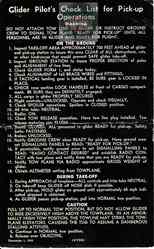
Glider Pilot Check List
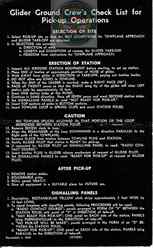
Glider Ground Crew Check List
|
OUR TOW SHIPS |

